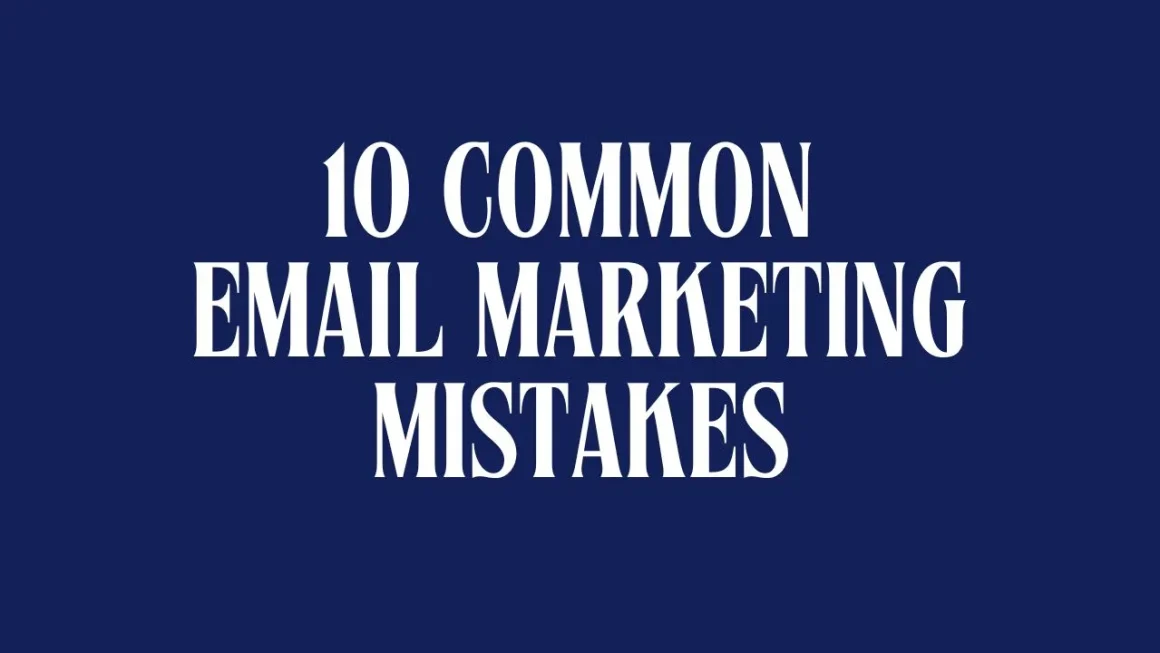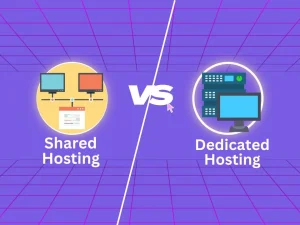10 Common Email Marketing Mistakes And How to Avoid Them: 1. Failing to segment your email list can lead to lower engagement rates.
Avoid this by targeting specific audience segments. Email marketing is a powerful tool for businesses to connect with their audience. However, common mistakes can hinder your success. Crafting emails that resonate requires attention to detail and strategic planning. Sending generic messages often results in low open rates and minimal engagement.
Personalizing content and segmenting your email list can significantly improve your results. It’s essential to avoid spammy subject lines and ensure your emails provide value. Tracking performance metrics helps you refine your strategy over time. Avoiding these common pitfalls can lead to more effective and impactful email marketing campaigns. Stay focused on delivering quality content to maintain a loyal subscriber base.
Ignoring Mobile Optimization
Email marketing is a powerful tool. But many businesses make common mistakes. One major mistake is ignoring mobile optimization. Many users check emails on their phones. If your emails are not optimized, you lose engagement. Let’s explore why mobile optimization is crucial.
Impact On Readability
Ignoring mobile optimization affects readability. Small text and long paragraphs are hard to read on phones. Users get frustrated and skip your emails. This leads to lower open rates and click-through rates.
Another issue is images. Large images take time to load. Slow-loading emails make users impatient. They might delete the email before it opens.
Links and buttons also need attention. If they are too small, users can’t click them easily. This reduces the chances of conversions and actions.
Best Practices For Mobile-friendly Emails
- Use Responsive Design: Ensure your email adapts to any screen size. This means it looks good on both desktops and mobile devices.
- Keep Text Short: Use short sentences and paragraphs. Break up text with bullet points.
- Optimize Images: Use smaller images that load quickly. Make sure they look good on small screens.
- Clickable Buttons: Use large buttons for calls to action. Ensure they are easy to tap on a mobile screen.
- Test on Multiple Devices: Always test your emails on different devices. Check both Android and iOS phones.
| Optimization Tip | Description |
|---|---|
| Responsive Design | Adapts to all screen sizes |
| Short Text | Easy to read on small screens |
| Optimized Images | Quick loading times |
| Clickable Buttons | Easy to tap on mobile |
| Device Testing | Ensures compatibility |
By following these best practices, you ensure your emails are mobile-friendly. This improves readability and user experience. Ultimately, it boosts your email marketing success.
Sending Without Permission
Email marketing can be powerful. But sending without permission can ruin its impact. Sending emails without consent is a common mistake. It frustrates recipients and damages your reputation. Let’s dive into the consequences and learn how to avoid this mistake.
Consequences Of Spamming
Sending emails without permission can lead to severe consequences. Here are some key points:
- Blacklist: Your email domain can get blacklisted. This stops your emails from reaching inboxes.
- Reputation Damage: Your brand’s reputation can suffer. People view spamming as intrusive and disrespectful.
- Legal Trouble: Various laws protect consumers from spam. Violating these laws can result in hefty fines.
- Unsubscribes: People will unsubscribe quickly. They don’t want to receive unwanted emails.
- Low Engagement: Engagement rates will plummet. People ignore emails they didn’t ask for.
Building A Permission-based List
Creating a permission-based email list is crucial. Here’s how you can build one:
- Use Sign-Up Forms: Have clear and easy-to-find sign-up forms on your website.
- Offer Incentives: Provide incentives for signing up. This could be discounts, free resources, or exclusive content.
- Double Opt-In: Implement a double opt-in process. This ensures the user confirms their subscription.
- Clear Privacy Policy: Make your privacy policy clear. Tell users how you will use their email addresses.
- Segment Your List: Segment your email list based on user preferences. This makes sure they receive relevant content.
Building a permission-based list protects your brand. It ensures your emails reach interested and engaged recipients.
Neglecting Personalization
Email marketing is a powerful tool. Yet, many marketers make the mistake of sending generic emails. Neglecting personalization can lead to lower engagement rates. It makes your audience feel unimportant. Personalized emails show you care. They make your audience more likely to engage with your content.
Importance Of Personalization
Personalization in email marketing is crucial. It helps build a connection with your audience. Personalized emails have higher open rates. They also have higher click-through rates. Your audience wants to feel special. A personalized email can make them feel valued.
Personalization is not just about using the recipient’s name. It involves understanding their preferences. It also involves delivering content that is relevant to them. Relevant content can lead to better engagement.
Techniques For Effective Personalization
- Segment your email list: Group your audience based on interests. Send targeted emails to each group.
- Use recipient’s name: Start emails with the recipient’s name. It adds a personal touch.
- Send relevant content: Use data to understand what your audience likes. Send content they will enjoy.
- Personalize subject lines: Use catchy and relevant subject lines. It increases the chances of your email being opened.
- Include personalized offers: Offer discounts or products based on past purchases. It can increase sales.
Let’s summarize these techniques in a table for better understanding:
| Technique | Purpose |
|---|---|
| Segment your email list | Target specific groups with relevant content |
| Use recipient’s name | Add a personal touch to emails |
| Send relevant content | Increase engagement with targeted content |
| Personalize subject lines | Increase email open rates |
| Include personalized offers | Boost sales with targeted offers |
Poor Subject Lines
Email marketing can be powerful, but poor subject lines can ruin everything. A weak subject line can lead to low open rates and lost opportunities. Crafting engaging subject lines is essential to capture your audience’s attention and drive engagement.
Crafting Engaging Subject Lines
Creating an engaging subject line requires creativity and a deep understanding of your audience. Here are some tips to help you craft compelling subject lines:
- Keep it Short: Aim for 50 characters or less.
- Be Clear and Specific: Your audience should know what to expect.
- Use Action Words: Words like “Discover,” “Learn,” and “Save” can drive action.
- Personalize: Adding the recipient’s name can increase open rates.
- Create Urgency: Phrases like “Limited Time Offer” can prompt quick action.
Avoiding Clickbait
Clickbait can harm your brand’s reputation and lead to unsubscribes. Avoid misleading your audience with exaggerated claims or false promises. Here are some best practices:
- Be Honest: Ensure your subject line matches the email content.
- Value Proposition: Highlight the real benefits without exaggeration.
- Test and Analyze: Use A/B testing to find what resonates with your audience.
Here’s a quick comparison of good vs. bad subject lines:
| Good Subject Line | Bad Subject Line |
|---|---|
| Exclusive Offer Just for You | You Won’t Believe This Deal! |
| Top 5 Tips to Boost Your Sales | Boost Your Sales in 1 Day! |
Inconsistent Branding
Inconsistent branding can confuse your audience and diminish your brand’s credibility. Consistency in branding ensures that your emails are recognizable and trusted by your recipients. Let’s explore how you can maintain a cohesive brand image in your email marketing efforts.
Maintaining Brand Identity
Your brand identity is more than just a logo. It includes colors, fonts, tone, and style. Ensure all these elements are present in every email. This helps build a strong connection with your audience.
- Use the same logo in every email.
- Stick to your brand colors and fonts.
- Keep your tone consistent. If your brand is casual, write casually.
Consistency builds trust and makes your emails easily recognizable.
Creating A Cohesive Design
A cohesive design aligns with your brand identity and enhances user experience. Here are some tips:
- Use templates that reflect your brand style.
- Include your logo in the header.
- Maintain uniform spacing and layout.
- Ensure images match your brand’s visual style.
Here is a simple table to help you remember the key elements:
| Element | Recommendation |
|---|---|
| Logo | Always include it at the top |
| Colors | Use your brand colors consistently |
| Fonts | Stick to your brand fonts |
| Images | Ensure they fit your brand style |
By maintaining a cohesive design, you strengthen your brand’s presence in every email.
Overloading With Content
One common email marketing mistake is overloading with content. Too much information can overwhelm your readers. They may lose interest and stop reading. This can lead to decreased engagement and higher unsubscribe rates. Finding the right balance is key to keeping your audience engaged.
Finding The Right Balance
Knowing what to include and what to leave out is crucial. Your email should be clear and concise. Use short paragraphs and bullet points to break up text. This makes it easier to read.
Consider using a table to organize your content:
| Component | Importance |
|---|---|
| Subject Line | High |
| Introduction | Medium |
| Main Message | High |
| Call to Action | High |
| Additional Information | Low |
Prioritizing Key Messages
Focus on your key messages first. Make sure these stand out. Use bold text to highlight important points. Place the most important information at the beginning.
- Keep your message clear and to the point.
- Use images sparingly to support your text.
- Avoid cluttering your email with unnecessary details.
By prioritizing your key messages, you ensure your audience gets the most important information quickly. This keeps them engaged and more likely to take action.
Ignoring Analytics
Ignoring analytics in email marketing is a common mistake. Not tracking data means missing out on valuable insights. These insights help improve your campaigns. Understanding key metrics and using data can transform your strategy.
Key Metrics To Track
Tracking the right metrics is crucial. Here are some key metrics to focus on:
- Open Rate: Measures how many recipients open your email. A high open rate shows good subject lines.
- Click-Through Rate (CTR): Indicates the percentage of recipients who clicked a link. A high CTR means engaging content.
- Bounce Rate: Shows the percentage of emails not delivered. A high bounce rate suggests issues with your email list.
- Conversion Rate: Measures the percentage of recipients who completed a desired action. High conversions mean effective calls-to-action.
- Unsubscribe Rate: Shows how many people opt-out from your list. High unsubscribes may indicate irrelevant content.
Using Data To Improve Campaigns
Data-driven decisions can enhance your email marketing strategy. Here’s how:
- Segment Your Audience: Use data to group your audience by interests. This leads to more personalized emails.
- Test Subject Lines: A/B testing can reveal what works best. Experiment with different tones and lengths.
- Optimize Send Times: Analyze data to find the best times to send emails. This can boost open rates.
- Improve Content: Use CTR data to understand what content resonates. Focus on creating more of what works.
- Reduce Bounce Rate: Regularly clean your email list. Remove inactive or incorrect addresses.
Using analytics can significantly improve your email marketing efforts. Pay attention to these metrics and make data-driven decisions.
Failing To Segment
Email marketing is a powerful tool. But many marketers make common mistakes. One big mistake is failing to segment their email list. This can lead to lower engagement and higher unsubscribe rates. Proper segmentation can improve email performance and customer satisfaction.
Benefits Of Segmentation
Segmenting your email list offers many benefits. It helps you target specific groups. This means more relevant content for each subscriber. Here are some key benefits:
- Increased Open Rates: Personalized emails are more likely to be opened.
- Higher Click-Through Rates: Relevant content drives more clicks.
- Reduced Unsubscribe Rates: Subscribers stay when they get what they want.
- Improved Conversion Rates: Targeted emails lead to more sales.
Effective Segmentation Strategies
To segment effectively, use these strategies:
- Demographic Information: Age, gender, and location help tailor messages.
- Behavioral Data: Track past purchases and website activity.
- Engagement Levels: Segment based on how subscribers interact with your emails.
- Preferences: Ask subscribers about their interests and preferences.
| Segmentation Type | Details |
|---|---|
| Demographic | Age, gender, location |
| Behavioral | Past purchases, website activity |
| Engagement | Email opens, clicks |
| Preferences | Interests, content preferences |
Start segmenting your email list today. Enjoy higher engagement and better results.
Not Testing Emails
Email marketing is a powerful tool. But not testing emails can lead to failures. Many marketers skip this vital step. They send emails without testing. This often results in poor engagement. Testing emails helps find what works best. It improves open rates and click-through rates.
A/b Testing Methods
A/B testing is a method to compare two versions of an email. This helps find out which performs better. You can test subject lines, email content, or call-to-action buttons.
- Subject Lines: Test different subject lines to see which one gets more opens.
- Email Content: Compare different content to find what engages readers more.
- Call-to-Action: Test different CTAs to see which one gets more clicks.
Common Elements To Test
Testing different elements in your email can boost performance. Here are some common elements to test:
| Element | Why Test It? |
|---|---|
| Subject Line | It determines if your email gets opened. |
| Email Content | It affects how engaged your readers are. |
| Images | Images can grab attention and convey messages quickly. |
| Call-to-Action | It directs readers to take the desired action. |
Make sure to test these elements. Use the results to improve your email campaigns.
Lack Of Clear Call To Action
One of the most crucial elements of email marketing is a clear call to action (CTA). A lack of clear call to action can lead to low engagement and poor conversion rates. If your audience doesn’t know what to do next, your email’s purpose is lost. Here’s how you can avoid this common mistake and ensure your CTAs are effective.
Crafting Strong Ctas
Your CTA should be specific and actionable. Use strong action verbs like “Buy”, “Download”, “Subscribe”. These words prompt immediate action. Avoid vague phrases like “Click here” or “Learn more”. Instead, be clear about what the reader will get by clicking.
Consider the audience’s needs. What value can your CTA offer them? For example, “Get your free eBook” is more compelling than “Download now”. Tailor your CTA to the content of your email. Ensure it matches the reader’s expectations.
Placement And Visibility
The placement of your CTA is crucial for visibility. Place it where it’s easily noticeable. Ideally, your CTA should be above the fold. This means it should be visible without scrolling.
Use contrasting colors to make your CTA stand out. Ensure it catches the reader’s eye. If your email has a lot of text, consider using multiple CTAs. Place one at the beginning, middle, and end. This ensures that the reader always has an opportunity to take action.
| Best Practices | Description |
|---|---|
| Strong Action Verbs | Use verbs that prompt immediate action like “Buy”, “Download”. |
| Specific and Clear | Avoid vague phrases. Be clear about what the reader gets. |
| Above the Fold | Place your CTA where it’s visible without scrolling. |
| Contrasting Colors | Make your CTA stand out with contrasting colors. |
By addressing the lack of clear call to action, you can significantly improve your email marketing results. Make your CTAs strong, visible, and valuable to the reader. This ensures higher engagement and conversion rates.
Frequently Asked Questions
What Are Common Email Marketing Mistakes?
Common email marketing mistakes include poor subject lines, lack of personalization, and ignoring mobile optimization. These errors can reduce engagement and conversion rates.
How Can I Avoid Spam Filters?
To avoid spam filters, use a reputable email service provider, avoid spammy language, and ensure proper email authentication.
Why Is Personalization Important In Email Marketing?
Personalization increases engagement by making emails more relevant to the recipient. It can improve open rates and conversions.
How Often Should I Send Marketing Emails?
Send marketing emails at a frequency that maintains engagement without overwhelming subscribers. Typically, 1-2 times per week is effective.
Conclusion
Avoiding common email marketing mistakes can significantly boost your campaign’s effectiveness. Focus on personalization and clear calls to action. Regularly test and analyze your emails for continuous improvement. By following these tips, you’ll engage your audience better and achieve higher conversion rates.
Stay proactive, and your email marketing efforts will succeed.











